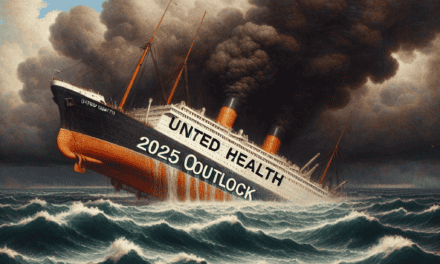“Seize the Moment: Evaluating Opportunities with RTX Stock Today!”
Introduction
Investing in RTX (NYSE:RTX), the aerospace and defense giant formerly known as Raytheon Technologies, requires a nuanced understanding of the current market dynamics and the company’s strategic positioning. As global defense budgets continue to rise amid geopolitical tensions, and with the commercial aerospace sector gradually recovering from the pandemic-induced downturn, RTX stands at a pivotal juncture. The company’s robust portfolio, encompassing advanced technologies in defense systems and commercial aviation, positions it well to capitalize on these trends. However, potential investors must also weigh factors such as supply chain disruptions, regulatory challenges, and the broader economic environment. Evaluating whether now is the opportune moment to invest in RTX involves a careful analysis of these elements, alongside the company’s financial health and growth prospects.
Market Trends Impacting RTX Stock
In recent years, the stock market has been characterized by volatility and rapid shifts, influenced by a myriad of global events and economic indicators. Among the companies navigating this complex landscape is RTX Corporation, a prominent player in the aerospace and defense industry. As investors contemplate whether now is the right time to invest in RTX stock, it is crucial to examine the market trends that are currently impacting its performance.
To begin with, the aerospace and defense sector has been experiencing a resurgence in demand, driven by increased global defense spending and a recovery in commercial air travel. Governments worldwide are prioritizing defense budgets in response to geopolitical tensions and emerging security threats. This trend bodes well for RTX, which is well-positioned to benefit from its diverse portfolio of defense products and services. Moreover, the gradual recovery of the commercial aviation sector, following the disruptions caused by the COVID-19 pandemic, presents additional growth opportunities for RTX’s commercial aerospace division.
In addition to sector-specific trends, broader economic factors are also influencing RTX’s stock performance. Inflationary pressures and interest rate hikes by central banks have created an environment of uncertainty in the financial markets. However, RTX’s strong balance sheet and robust cash flow generation provide a buffer against these macroeconomic challenges. The company’s ability to maintain stable financial health amidst economic fluctuations is a testament to its resilience and strategic management.
Furthermore, technological advancements and innovation are playing a pivotal role in shaping the future of the aerospace and defense industry. RTX has been at the forefront of integrating cutting-edge technologies into its operations, from advanced propulsion systems to cybersecurity solutions. This commitment to innovation not only enhances RTX’s competitive edge but also positions it to capitalize on emerging market opportunities. As the industry continues to evolve, RTX’s focus on research and development is likely to yield long-term benefits, potentially driving stock appreciation.
Another critical factor to consider is the company’s strategic initiatives and partnerships. RTX has been actively pursuing collaborations and acquisitions to expand its capabilities and market reach. These strategic moves are designed to strengthen its position in key markets and enhance its product offerings. By leveraging synergies from these partnerships, RTX aims to achieve operational efficiencies and drive revenue growth. Investors should closely monitor these developments, as successful execution of strategic initiatives could positively impact the company’s stock performance.
However, it is important to acknowledge the potential risks and challenges that could affect RTX’s stock. Regulatory changes, supply chain disruptions, and competitive pressures are some of the factors that could pose headwinds for the company. Additionally, geopolitical uncertainties and trade tensions could impact international sales and operations. Investors must weigh these risks against the potential rewards when considering an investment in RTX stock.
In conclusion, the decision to invest in RTX stock should be informed by a comprehensive analysis of the market trends impacting the company. While there are promising growth prospects driven by increased defense spending, commercial aviation recovery, and technological innovation, potential risks must also be taken into account. As with any investment, due diligence and a thorough understanding of the market dynamics are essential. By staying informed and considering both the opportunities and challenges, investors can make a more informed decision about whether now is the right time to invest in RTX stock.
Financial Performance of RTX in Recent Quarters
In evaluating whether now is the right time to invest in RTX (NYSE:RTX) stock, it is essential to consider the company’s financial performance in recent quarters. RTX, formerly known as Raytheon Technologies, has been a significant player in the aerospace and defense industry, and its financial results provide valuable insights into its current standing and future potential. Over the past few quarters, RTX has demonstrated a mixed financial performance, reflecting both the challenges and opportunities it faces in a dynamic market environment.
To begin with, RTX’s revenue trends have shown resilience despite the broader economic uncertainties. In recent quarters, the company has reported steady revenue growth, driven primarily by its defense segment. This segment has benefited from increased government spending on defense and security, which has provided a stable revenue stream. Moreover, RTX’s diversified portfolio, which includes both commercial aerospace and defense, has allowed it to mitigate risks associated with fluctuations in either sector. This diversification has been particularly advantageous as the commercial aerospace industry continues to recover from the impacts of the COVID-19 pandemic.
Transitioning to profitability, RTX has faced some challenges in maintaining consistent profit margins. The company has been navigating rising costs, particularly in raw materials and labor, which have put pressure on its operating margins. However, RTX has implemented cost-control measures and efficiency improvements to counteract these pressures. These efforts have started to bear fruit, as evidenced by a gradual improvement in operating margins in recent quarters. Additionally, RTX’s focus on innovation and technology development has positioned it well to capitalize on emerging opportunities, potentially enhancing its profitability in the long term.
Another critical aspect of RTX’s financial performance is its cash flow generation. The company has maintained a robust cash flow position, which is crucial for funding its strategic initiatives and returning value to shareholders. RTX’s strong cash flow has enabled it to invest in research and development, pursue strategic acquisitions, and maintain a competitive edge in the industry. Furthermore, the company’s commitment to returning capital to shareholders through dividends and share buybacks underscores its confidence in its financial health and future prospects.
In terms of balance sheet strength, RTX has made strides in reducing its debt levels, which is a positive indicator for potential investors. The company has prioritized debt reduction as part of its financial strategy, aiming to enhance its financial flexibility and reduce interest expenses. This focus on deleveraging has improved RTX’s credit profile, making it more attractive to investors seeking stability and long-term growth potential.
Looking ahead, RTX’s financial performance will likely be influenced by several factors, including geopolitical developments, defense spending trends, and the recovery trajectory of the commercial aerospace sector. While challenges remain, such as supply chain disruptions and inflationary pressures, RTX’s strategic initiatives and strong market position provide a solid foundation for future growth.
In conclusion, RTX’s recent financial performance presents a nuanced picture for potential investors. The company’s resilience in revenue generation, efforts to improve profitability, robust cash flow, and strengthened balance sheet are positive indicators. However, investors should also consider the broader market conditions and potential risks before making an investment decision. As with any investment, thorough research and consideration of individual financial goals and risk tolerance are essential when evaluating the timing and suitability of investing in RTX stock.
Competitive Landscape for RTX
In the ever-evolving aerospace and defense industry, RTX Corporation, formerly known as Raytheon Technologies, stands as a formidable player. As investors contemplate whether now is the opportune moment to invest in RTX stock, it is crucial to examine the competitive landscape in which the company operates. Understanding the dynamics of this sector can provide valuable insights into RTX’s potential for growth and its ability to maintain a competitive edge.
The aerospace and defense industry is characterized by a few dominant players, with RTX being one of the largest. Its primary competitors include Boeing, Lockheed Martin, and Northrop Grumman, each with its own strengths and market focus. RTX’s diverse portfolio, which spans commercial aerospace, defense, and intelligence, positions it uniquely among its peers. This diversification allows RTX to mitigate risks associated with fluctuations in any single market segment, providing a more stable revenue stream.
Moreover, RTX’s recent strategic initiatives have further solidified its competitive position. The merger between Raytheon Company and United Technologies Corporation in 2020 created a behemoth with enhanced capabilities and resources. This merger not only expanded RTX’s technological expertise but also broadened its customer base, enabling it to offer a more comprehensive suite of products and services. Consequently, RTX is better equipped to compete for lucrative government contracts and commercial aerospace projects.
In addition to its robust portfolio, RTX’s commitment to innovation is a critical factor in its competitive standing. The company invests heavily in research and development, focusing on cutting-edge technologies such as hypersonics, cybersecurity, and advanced radar systems. By staying at the forefront of technological advancements, RTX can meet the evolving needs of its clients and maintain a competitive advantage over its rivals. This emphasis on innovation is particularly important in the defense sector, where technological superiority can be a decisive factor in securing contracts.
Furthermore, RTX’s global presence enhances its competitiveness. With operations in numerous countries, the company can tap into international markets and benefit from diverse revenue streams. This global reach not only provides RTX with access to a broader customer base but also allows it to leverage regional expertise and partnerships. As geopolitical tensions continue to influence defense spending worldwide, RTX’s international footprint positions it well to capitalize on emerging opportunities.
However, it is essential to consider the challenges that RTX faces in this competitive landscape. The aerospace and defense industry is subject to stringent regulatory requirements and political uncertainties, which can impact business operations and profitability. Additionally, supply chain disruptions and rising material costs pose potential risks to RTX’s ability to deliver on its commitments. Despite these challenges, RTX’s strong financial position and strategic initiatives provide a buffer against such uncertainties.
In conclusion, the competitive landscape for RTX is both challenging and promising. The company’s diversified portfolio, commitment to innovation, and global presence position it well to navigate the complexities of the aerospace and defense industry. While there are inherent risks, RTX’s strategic initiatives and robust financial health suggest that it is well-prepared to maintain its competitive edge. For investors considering RTX stock, understanding these dynamics is crucial in making an informed decision. As the industry continues to evolve, RTX’s ability to adapt and innovate will be key determinants of its future success.
Technological Innovations by RTX
RTX Corporation, formerly known as Raytheon Technologies, has long been a stalwart in the aerospace and defense sectors, renowned for its cutting-edge technological innovations. As investors contemplate whether now is the opportune moment to invest in RTX stock, it is crucial to examine the company’s recent technological advancements and their potential impact on future growth. By understanding these innovations, investors can better assess the company’s prospects and make informed decisions.
One of the most significant areas of innovation for RTX is its commitment to advancing aerospace technology. The company has been at the forefront of developing next-generation propulsion systems, which are pivotal in enhancing fuel efficiency and reducing carbon emissions. This focus aligns with the global push towards sustainability and the increasing demand for environmentally friendly solutions in the aviation industry. RTX’s investment in hybrid-electric propulsion systems, for instance, demonstrates its dedication to leading the charge in sustainable aviation technology. Such advancements not only position RTX as a leader in the field but also open up new market opportunities as airlines and governments seek to meet stringent environmental regulations.
In addition to aerospace, RTX has made substantial strides in defense technology. The company’s innovations in missile defense systems and cybersecurity are particularly noteworthy. As global security threats evolve, the demand for advanced defense solutions continues to rise. RTX’s development of cutting-edge radar systems and missile interceptors underscores its ability to address these challenges effectively. Moreover, the company’s focus on cybersecurity solutions is increasingly relevant in today’s digital age, where cyber threats pose significant risks to national security. By investing in these areas, RTX not only enhances its product portfolio but also strengthens its position as a key player in the defense sector.
Furthermore, RTX’s commitment to research and development (R&D) is a testament to its innovative spirit. The company consistently allocates a significant portion of its revenue to R&D, ensuring that it remains at the forefront of technological advancements. This dedication to innovation is evident in its collaborations with leading research institutions and its investment in emerging technologies such as artificial intelligence and quantum computing. These efforts not only drive product innovation but also enhance operational efficiencies, ultimately contributing to the company’s long-term growth prospects.
While RTX’s technological innovations are impressive, potential investors must also consider the broader market conditions and the company’s financial health. The aerospace and defense sectors are subject to geopolitical influences and government spending patterns, which can impact RTX’s performance. However, the company’s diverse portfolio and strong order backlog provide a degree of resilience against such uncertainties. Additionally, RTX’s robust financial position, characterized by healthy cash flows and a strong balance sheet, further supports its ability to invest in future growth initiatives.
In conclusion, RTX’s technological innovations across aerospace and defense sectors underscore its potential for sustained growth. The company’s focus on sustainable aviation, advanced defense systems, and cutting-edge research positions it well to capitalize on emerging market trends. However, investors should remain cognizant of external factors that could influence the company’s performance. By weighing these considerations, investors can make a more informed decision about whether now is the right time to invest in RTX stock. Ultimately, RTX’s commitment to innovation and its strategic positioning in key markets make it a compelling option for those seeking exposure to the aerospace and defense industries.
Economic Factors Influencing RTX Stock
When considering an investment in RTX (NYSE:RTX) stock, it is crucial to examine the economic factors that could influence its performance. RTX, a prominent player in the aerospace and defense industry, is subject to a variety of economic dynamics that can impact its stock value. Understanding these factors can provide potential investors with a clearer picture of whether now is the right time to invest.
To begin with, the global economic environment plays a significant role in shaping the prospects of RTX. The aerospace and defense sectors are heavily influenced by government spending, particularly in defense budgets. In times of economic uncertainty or fiscal constraints, governments may prioritize or cut defense spending, directly affecting companies like RTX. Currently, geopolitical tensions and the need for advanced defense systems have led to increased defense budgets in several countries, potentially benefiting RTX. However, investors should remain vigilant about any shifts in government policies that could alter this trend.
Moreover, the commercial aerospace segment of RTX is closely tied to the health of the global economy. Economic growth typically leads to increased air travel demand, which in turn boosts the demand for commercial aircraft and related services. Conversely, economic downturns can result in reduced air travel and delayed aircraft orders, negatively impacting RTX’s commercial aerospace business. As the world recovers from the economic disruptions caused by the COVID-19 pandemic, there is cautious optimism about a rebound in air travel. Nevertheless, the pace and sustainability of this recovery remain uncertain, influenced by factors such as inflation, interest rates, and consumer confidence.
In addition to these broader economic considerations, supply chain dynamics are another critical factor affecting RTX. The aerospace and defense industries rely on complex global supply chains, and disruptions can have significant repercussions. The COVID-19 pandemic exposed vulnerabilities in these supply chains, leading to delays and increased costs. While efforts are underway to enhance supply chain resilience, ongoing challenges such as semiconductor shortages and geopolitical tensions could continue to pose risks. Investors should assess how effectively RTX is managing these supply chain issues and whether they could impact the company’s ability to meet demand and maintain profitability.
Furthermore, technological advancements and innovation are pivotal in the aerospace and defense sectors. RTX’s ability to stay at the forefront of technological developments can influence its competitive position and long-term growth prospects. The company has been investing in research and development to enhance its product offerings, focusing on areas such as advanced defense systems, cybersecurity, and sustainable aviation technologies. These investments could position RTX well for future growth, but they also require substantial capital and carry inherent risks. Investors should consider whether RTX’s innovation strategy aligns with market trends and customer needs.
Lastly, it is essential to evaluate RTX’s financial health and performance metrics. Factors such as revenue growth, profit margins, and debt levels provide insights into the company’s operational efficiency and financial stability. A strong balance sheet and consistent cash flow generation can offer a buffer against economic uncertainties and support strategic investments. Potential investors should analyze RTX’s financial statements and compare them with industry peers to gauge its relative strength.
In conclusion, while there are several economic factors that could influence RTX stock, potential investors must weigh these considerations carefully. The interplay of government spending, global economic conditions, supply chain dynamics, technological innovation, and financial performance will all play a role in determining whether now is the right time to invest in RTX. By staying informed and conducting thorough due diligence, investors can make more informed decisions regarding their investment in RTX stock.
Analyst Predictions for RTX Stock
As investors navigate the ever-evolving landscape of the stock market, the question of whether now is the right time to invest in RTX (NYSE:RTX) stock is a pertinent one. RTX Corporation, formerly known as Raytheon Technologies, is a major player in the aerospace and defense industry, and its stock performance is closely watched by analysts and investors alike. To make an informed decision, it is crucial to consider the various predictions and analyses provided by financial experts.
Analysts have been closely monitoring RTX’s financial health, market position, and future prospects. One of the key factors influencing their predictions is the company’s recent performance. RTX has demonstrated resilience in the face of global economic challenges, including supply chain disruptions and fluctuating defense budgets. The company’s ability to adapt and innovate has been a focal point for analysts, who often highlight its strong portfolio of defense contracts and cutting-edge technologies as indicators of potential growth.
Moreover, RTX’s strategic initiatives, such as its focus on digital transformation and sustainability, have garnered positive attention. Analysts believe that these initiatives could enhance operational efficiency and open new revenue streams, thereby strengthening the company’s long-term outlook. Additionally, RTX’s commitment to research and development is seen as a catalyst for future innovation, which could further solidify its competitive edge in the industry.
However, it is important to acknowledge the challenges that RTX faces. The aerospace sector, in particular, has been significantly impacted by the COVID-19 pandemic, with reduced air travel leading to decreased demand for commercial aircraft. While there are signs of recovery, analysts caution that the pace of this recovery remains uncertain. Consequently, RTX’s commercial aerospace segment may continue to experience volatility, which could affect overall stock performance.
In light of these factors, analysts have offered a range of predictions for RTX stock. Some maintain a bullish outlook, citing the company’s robust defense business and strategic initiatives as reasons for optimism. They argue that RTX’s diversified portfolio and strong government contracts provide a stable foundation for growth, even amid economic uncertainties. On the other hand, more cautious analysts point to the potential risks associated with the commercial aerospace sector and geopolitical tensions, which could impact defense spending.
To further complicate matters, macroeconomic factors such as interest rates and inflation also play a role in shaping analyst predictions. Rising interest rates could increase borrowing costs for companies, potentially affecting RTX’s capital expenditures and expansion plans. Meanwhile, inflationary pressures could lead to higher input costs, which may impact profit margins. Analysts are closely monitoring these variables to assess their potential impact on RTX’s financial performance.
In conclusion, the decision to invest in RTX stock requires careful consideration of both the opportunities and challenges facing the company. While analysts offer a range of predictions, it is essential for investors to conduct their own research and consider their risk tolerance and investment goals. By staying informed and weighing the various factors at play, investors can make a more informed decision about whether now is the right time to invest in RTX stock. As always, consulting with a financial advisor can provide additional insights tailored to individual circumstances.
Long-term Growth Prospects for RTX
When considering the long-term growth prospects of RTX (NYSE:RTX), investors must weigh a variety of factors that could influence the company’s future performance. RTX, formed from the merger of Raytheon Company and United Technologies Corporation in 2020, is a major player in the aerospace and defense industry. This sector is characterized by its cyclical nature, technological advancements, and geopolitical influences, all of which can significantly impact RTX’s growth trajectory.
To begin with, the aerospace and defense industry is poised for substantial growth in the coming years. Global defense spending is on the rise, driven by increasing geopolitical tensions and the need for nations to modernize their military capabilities. RTX, with its diverse portfolio of defense products and services, is well-positioned to capitalize on this trend. The company’s strong relationships with the U.S. Department of Defense and other international defense agencies provide a solid foundation for future contract wins, which could drive revenue growth over the long term.
Moreover, the commercial aerospace segment is expected to recover as the world emerges from the COVID-19 pandemic. The pandemic severely impacted air travel, leading to a downturn in demand for commercial aircraft. However, as vaccination rates increase and travel restrictions ease, the aviation industry is gradually rebounding. RTX’s Pratt & Whitney division, which manufactures aircraft engines, stands to benefit from this recovery. The anticipated increase in air travel will likely lead to higher demand for new aircraft and maintenance services, providing a boost to RTX’s commercial aerospace business.
In addition to these industry trends, RTX’s commitment to innovation and technology development is a critical factor in its long-term growth prospects. The company invests heavily in research and development to maintain its competitive edge and meet the evolving needs of its customers. RTX’s focus on cutting-edge technologies, such as hypersonics, cybersecurity, and advanced radar systems, positions it well to capture emerging opportunities in the defense sector. Furthermore, the company’s efforts to enhance its digital capabilities and streamline operations through digital transformation initiatives could lead to improved efficiency and profitability over time.
However, it is important to consider potential challenges that could affect RTX’s growth prospects. The aerospace and defense industry is subject to regulatory scrutiny and budgetary constraints, particularly in the defense sector. Changes in government policies or defense spending priorities could impact RTX’s ability to secure new contracts. Additionally, the company faces competition from other major defense contractors, which could pressure margins and market share.
Another factor to consider is the ongoing supply chain disruptions affecting the global economy. These disruptions have the potential to impact RTX’s production schedules and cost structures, particularly in the commercial aerospace segment. The company must navigate these challenges effectively to ensure sustained growth.
In conclusion, while RTX faces certain risks and challenges, its strong position in the aerospace and defense industry, coupled with favorable market trends and a focus on innovation, suggests promising long-term growth prospects. Investors considering RTX stock should weigh these factors carefully, keeping in mind the cyclical nature of the industry and the potential for geopolitical and economic shifts. As with any investment, a thorough analysis of the company’s fundamentals and market conditions is essential to making an informed decision.
Q&A
1. **What is RTX Corporation?**
RTX Corporation, formerly known as Raytheon Technologies, is a major aerospace and defense company involved in providing advanced systems and services for commercial, military, and government customers worldwide.
2. **How has RTX stock performed recently?**
RTX stock has experienced fluctuations due to various market conditions, including geopolitical tensions, defense spending trends, and broader economic factors.
3. **What are the key factors influencing RTX stock?**
Key factors include government defense budgets, geopolitical tensions, technological advancements in aerospace and defense, and the company’s financial performance.
4. **What are the potential risks of investing in RTX?**
Risks include changes in government defense spending, regulatory challenges, competition in the aerospace and defense sector, and potential impacts from global economic conditions.
5. **What are the growth opportunities for RTX?**
Growth opportunities include increased defense spending, advancements in aerospace technology, and expansion into new markets and regions.
6. **What do analysts say about RTX stock?**
Analysts’ opinions vary, with some seeing potential for growth due to defense sector demand, while others may express caution due to market volatility and specific company challenges.
7. **Is now the right time to invest in RTX stock?**
The decision to invest in RTX stock depends on individual investment goals, risk tolerance, and market analysis. It’s important to consider current market conditions, company performance, and future outlook before making an investment decision.
Conclusion
Investing in RTX (NYSE:RTX) stock requires careful consideration of several factors. The company, known for its aerospace and defense operations, has faced challenges such as supply chain disruptions and geopolitical tensions, which can impact its performance. However, RTX also benefits from strong government contracts and a robust defense sector, which can provide stability and growth potential. Investors should assess the current market conditions, RTX’s financial health, and industry trends before making a decision. Ultimately, whether now is the right time to invest in RTX depends on individual risk tolerance, investment goals, and market outlook.





